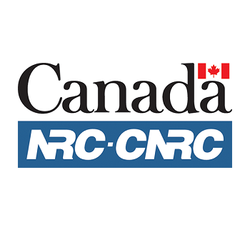
NRC — Offshore Engineering Basin — Research Facility
At a glance
- No Condition
- Open Date : November 14, 2019
- Mining, quarrying, and oil and gas extraction
- Utilities
- Manufacturing
- Transportation and warehousing
- Professional, scientific and technical services
- Canada
- Non-profit
- For-profit business
- All revenue ranges
- All organization sizes
- All groups
- Research
- Environment
- Economic, Social and Community Development
- All the groups
- All structures
- All dimensions
Overview
Fee-for-service 75 m x 32 m offshore engineering basin that can produce multi-directional waves up to 1 m high, representing extreme model sea-state conditions that occur only once in 10,000 years.
Activities funded
The NRC Offshore Engineering Basin grant supports research and development projects that utilize its advanced indoor ocean facility to evaluate and enhance marine technologies. Eligible activities focus on testing and analyzing marine systems under simulated oceanic conditions.
- Seakeeping tests to assess ship stability and performance in various sea conditions.
- Manoeuvering trials to improve vessel navigation and control.
- Wave energy conversion experiments to enhance efficiency of renewable energy technologies.
- Assessing wave impact loads on ships or offshore structures for better safety and resilience.
- Testing tow out, set down, and operation of offshore structures to ensure operational readiness and safety.
Eligibility
The eligibility criteria for this grant are not specified in the provided context. If you require specific information about the eligibility criteria for this grant, you may need to contact the organization offering the grant directly or refer to their official documentation.
Who is eligible?
- Companies involved in marine engineering - Companies developing marine technologies - Companies working on offshore structures - Companies focused on wave energy conversion
Eligible expenses
This grant supports projects that utilize advanced testing facilities to enhance marine technology's performance, efficiency, and safety. Eligible activities focus on the assessment and development of marine systems under realistic marine conditions.
- Seakeeping performance assessments of marine vessels.
- Manoeuvering tests for improved navigation and control.
- Wave energy conversion tests to evaluate renewable energy systems.
- Wave impact load assessments on ships or offshore structures.
- Towing, setting down, and operational testing of offshore structures.
Selection criteria
- Performance, efficiency, and safety of marine systems - Assessment of concepts in a controlled environment - Testing models at a large scale for quality and true-to-life results
How to apply
Preliminary Engagement
- Contact the NRC's Ocean, Coastal and River Engineering Research Centre via email.
- Discuss your project needs and determine the alignment with NRC capabilities.
- Receive initial feedback or guidance from NRC experts.
Documentation Preparation
- Gather necessary documentation detailing your project scope and objectives.
- Prepare technical documents demonstrating the potential benefits of using the facility.
- Include project timelines, budgets, and any supporting data.
Application Submission
- Email the completed application and required documentation to NRC.ContactOCRE-ContactezGOCF.CNRC@nrc-cnrc.gc.ca.
- Ensure all documents are complete and align with the NRC's expectations discussed.
Follow-Up and Confirmation
- Await confirmation of receipt from the NRC.
- Be prepared to provide additional information or clarification if requested.
- Engage in further discussions or meetings if necessary to finalize application details.
Additional information
Here are additional relevant details for this grant:
- The indoor model ocean facility is among the most advanced in the world, providing unique research and testing capabilities.
- The facility supports the bridging of innovation and commercialization in marine technology.
- The facility can simulate extreme ocean conditions that occur once in 10,000 years.
- Access to world-class, customizable testing facilities is offered, with an array of adjustable instrumentation available.
- The NRC provides expertise in advanced engineering for complex water environments, which can help reduce risks in R&D projects.
- The basin can accommodate large ship models and offshore structures for testing.
- Data collection capabilities include 256-channel measurement and high data rates up to 100 kHz.
- The facility allows for varying water depths and conditions to simulate different marine environments effectively.
- The NRC offers early involvement in projects to help reduce overall risk and cost to market.
- The basin's wavemaker configuration allows for time-saving during testing phases.
Frequently Asked Questions about the NRC — Offshore Engineering Basin — Research Facility Program
What is the NRC — Offshore Engineering Basin — Research Facility?
How much funding can be received?
What expenses are eligible under NRC — Offshore Engineering Basin — Research Facility?
What is the deadline to apply?
Is the NRC — Offshore Engineering Basin — Research Facility a grant, loan, or tax credit?
Who are the financial supporters of the NRC — Offshore Engineering Basin — Research Facility?
Who is eligible for the NRC — Offshore Engineering Basin — Research Facility program?
Who can I contact for more information about the NRC — Offshore Engineering Basin — Research Facility?
Where is the NRC — Offshore Engineering Basin — Research Facility available?
More programs like this

Industrial Research Assistance Program (IRAP) – AI Assist
National Research Council Canada (NRC)
Clean Technology Manufacturing (CTM) Investment Tax Credit (ITC)
Canada Revenue Agency (CRA)
Strategic Innovation Fund (SIF)
Innovation, Science and Economic Development Canada (ISED)
Incentives for medium and heavy-duty zero-emission vehicles (iMHZEV) Program
Transport Canada
Industrial Research Assistance Program (IRAP) — Youth Employment Program (YEP)
National Research Council Canada (NRC)
Mitacs Accelerate
Mitacs
ISED — Artificial intelligence (AI)
Innovation, Science and Economic Development Canada (ISED)
Global Innovation Clusters
Innovation Canada
ECO Canada — Student Work Placement Program
ECO Canada